Albert Henry Potter, a name that makes passionate watch collectors listen up. After all, he was considered one of the best watchmakers of his time. A universal watchmaking genius who not only produced watches of highest quality, but also tried to make affordable watches for everyone. It is the latter that we will be discussing here, pocket watches from the Charmilles brand.
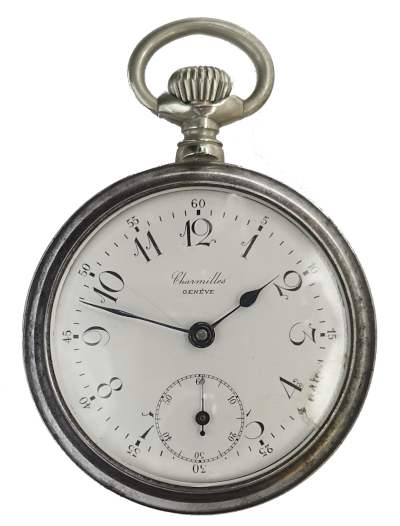
A bit of history
There is a wealth of information about Albert H. Potter online, so I am only presenting a short version of it here. Hans Weil has compiled a very detailed presentation (German only): Albert H. Potter
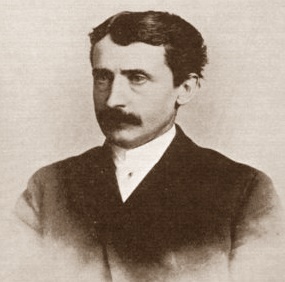
Potter was born on July 13, 1836 in the USA in Mechanicville in the state of New York. From 1852 to 1855, he completed an apprenticeship as a watchmaker at Wood and Foley in Albany, about 20 miles south of Mechanicville. He then moved to New York City and opened a watch repair shop there. He soon began making and selling pocket watches. Over the course of about six years, around 35 American-style pocket watches are said to have been produced in his workshop and sold at quite high prices.
Potter moved to Cuba in 1861 to open a watch business in Havana and thus escape the Civil War (1861 – 65) in the USA. Potter probably returned to the USA in 1867 and settled in Williamsburg. He had already begun to work on escapements in Havana, and he now expanded on this in Williamsburg. This work led to Potter’s first patent US73646 of 1868 for a chronometer escapement. Fifteen further patents followed, including for various escapements and a compensation balance.
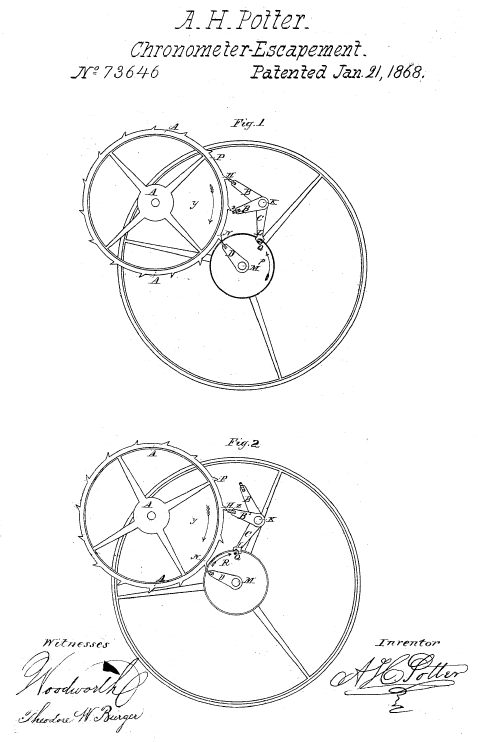
After further stops in Minneapolis, Milwaukee and Chicago, Potter moved to Switzerland in 1876 and settled in Geneva. As a watchmaker who had moved here, Potter was certainly viewed with suspicion by his colleagues in Geneva at first. However, he soon seemed to gain recognition for his outstanding work. From 1878 to 1889, he was a member of the Commission de Surveillance de l’École d’Horlogerie in Geneva, a kind of supervisory board of the watchmaking school.
Potter lived in Geneva until his death in 1908, although he had already closed his business in the early 1890s for health reasons. Unfortunately, his economic situation was also poor, which was certainly not good for his mental well-being.
The following picture shows an example of the quality and beauty of Potter’s pocket watch movements:
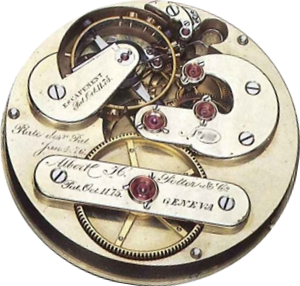
The Charmilles watches
Potter sold some patents to other companies. These included patents for the later Charmilles watches, which he initially sold to the New Haven Watch Company. However, this was taken over by the Trenton Watch Company and then dissolved. However, neither company ever produced watches based on Potter’s patents. Potter was thus able to sell the rights for the Swiss patent CH3647 dated 16.06.1891 to the Geneva company J. Badollet & Cie.
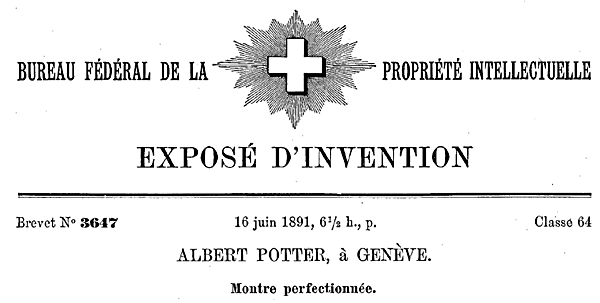
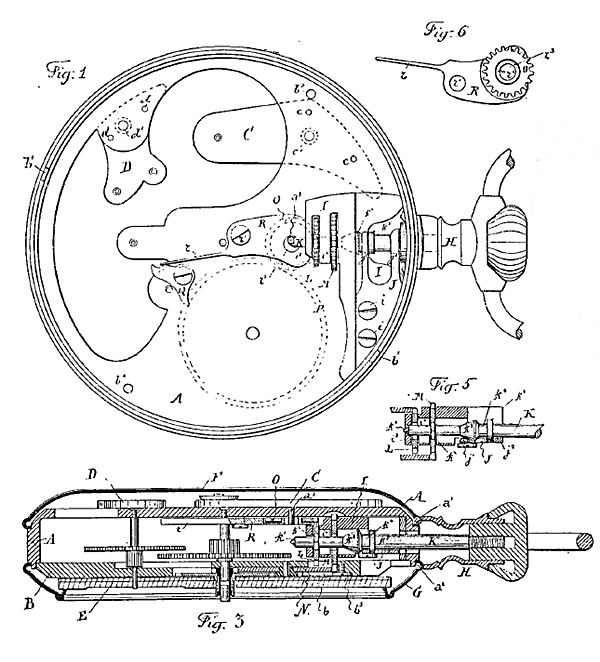
Badollet finally produced the pocket watches with the name Charmilles. They were named after their place of manufacture, Charmilles, a district of Geneva. It is said that 16,000 Charmilles watches were produced and sold at a price of 3 to 4 US dollars each. Although they were quite inexpensive, the watches were not a great commercial success, as the even cheaper Dollar Watches were now available in the USA for just one dollar. As they were so cheap, a large proportion of Charmilles watches were probably simply disposed of when they no longer worked. Today they are valued by collectors!
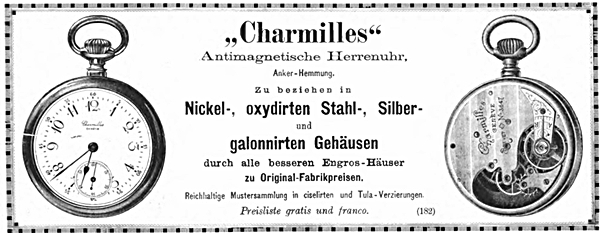
This is what the Charmilles’ movement looks like after removing the pressed-on case base cover:

The labeling on the plate is interesting:
Charmilles
GENÈVE
BREVET ![]() No. 3647
No. 3647
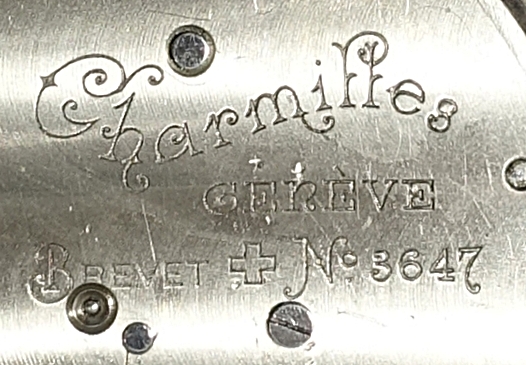
There are also Charmilles movements with the inscription
CHARMILLES GENEVA
PATENT No 5056
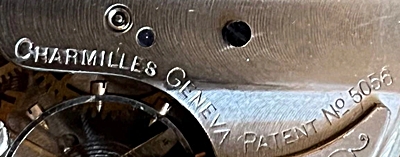
British patent 5056 from 1887 describes a single-tooth escapement by Potter. However, such an escapement is not used in Charmilles watches!
Incidentally, Badollet had the typical bridge design of the Charmilles watches registered in the Swiss Official Gazette of Commerce as model no. 2 in July 1891, just a few days after the patent CH3647 was granted to Potter.
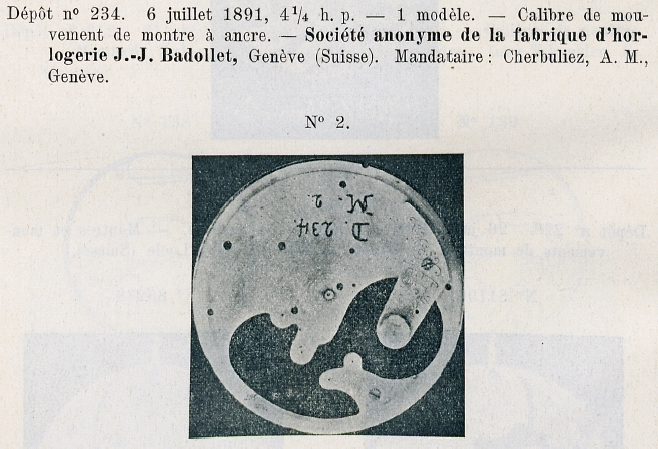
You can see what makes these movements so special when you take them apart. Before doing so, however, it is essential to remove the tension from the mainspring. The click can be found here:
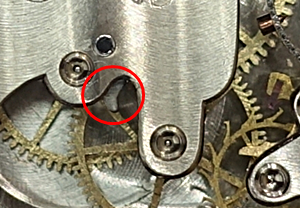
If you take a closer look at the picture of the bridge side above, you will not see any screws that would allow the movement to be removed from the case. You can see removable cocks for the balance, the escape wheel and the pallet fork, but no screws for the plate under which the other wheels and the mainspring barrel are located.
Now let’s take a look at the dial side:
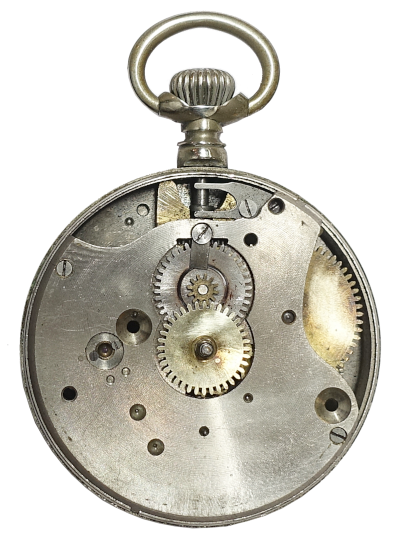
There are screws here, so the plate on the dial side can be removed:

The mainspring barrel has already been removed here; the ratchet wheel underneath can be seen at the top right. The gear train has a classic design, with the power flowing from the mainspring barrel via the center wheel, the third wheel, the fourth wheel and the escape wheel to the pallet fork and from there to the balance.
If you finally remove all the parts – the balance cock with balance, of course, from the other side – this is what remains:
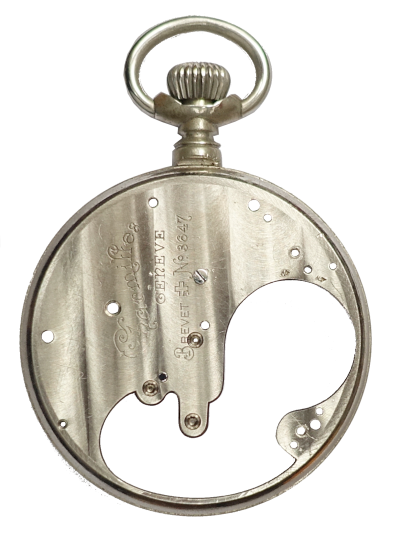
The case and the base plate are therefore made from one piece! The crown is firmly integrated into the case. This design was probably a key factor in the low-cost production of Charmilles watches. Of course, savings were also made on the jewel bearings, so that the movement has to work with only seven jewels. Incidentally, the case and therefore also the movement diameter is 48.5 mm, i.e. 21 1/2´´´ (French Lines).
